

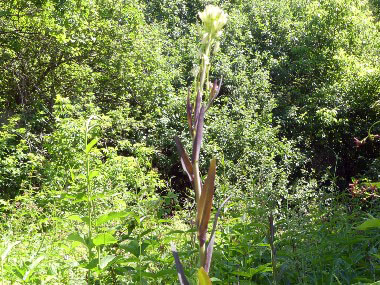

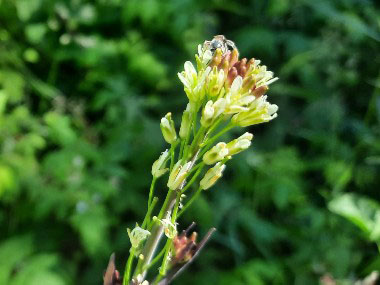
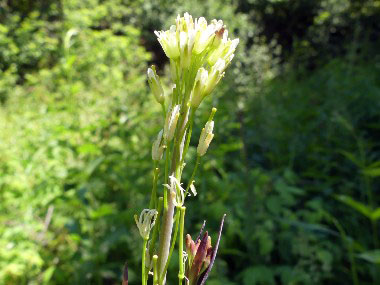
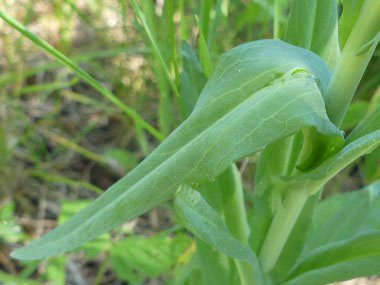
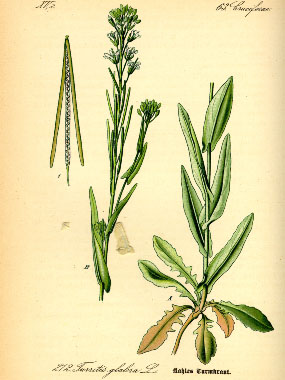
To support our efforts please browse our store (books with health benefits, etc.).
This is a unique plant in the Brassicaceae (mustard) family. Tower mustard is native to North America as well as Europe, Asia and northern Africa yet in some areas it may not be seen as frequently as in other areas. It is a biennial or short-lived perennial plant. Among the various Rock Cresses (Arabis spp.), Tower Mustard is mostly likely to be found in black soil prairies, although it does grow in other kinds of habitats. The tower-like inflorescence gives this mustard plant an odd appearance that is quite striking. Because Tower Mustard is a somewhat rather robust plant, it is surprising that this species is not more common.
Distinguishing Features
The tall tower-like structure of this plant is what catches the eye first. The blue-green appearance stands out as does the purplish coloring as it ages. Being in the mustard family of plants that means the first-year growth is a rosette of basal, grayish to green leaves.
Flowers
The flower structure on the Tower Mustard is an elongating raceme, with blooming flowers in a small flat, compact cluster at the top of the stem. These flowers are small, about ½ cm (1/8 inch) long with 4 creamy white to white colored petals, 4 green to yellowish sepals and several yellow stamens. The petals spread open but typically they're often seen only poking out of the sepals. One plant typically has multiple flowering branches. The bloom period for this plant occurs during late spring to mid-summer and lasts about 1½ months.
 Fields
of Nutrition has medicinal benefits and vitamin/mineral content of Tower Mustard.
Fields
of Nutrition has medicinal benefits and vitamin/mineral content of Tower Mustard.
Leaves
Stem leaves can grow up to 7cm (3”) long and 2.5cm (1”) wide, usually have a lance-like shape, are toothless, mostly hairless except perhaps around the edges, with a pointed tip and a pair of lobes at the base that wrap around and clasp the stem. The leaves become smaller as they ascend the stem. There is a waxy powder that gives the leaves at the top a blue-green appearance. Basal leaves are more spatula shaped with a blunt tip and shallow lobes.
Height
This plant can grow anywhere from 30cm to well over 1 metre (1 to 3'). The stem is mostly smooth and light green, often also with a bluish cast.
Habitat
Habitats include rocky open woodlands, various kinds of prairies, barren savannas, limestone glades, rocky bluffs, and along woodland edges.
Edible Parts
Leaves are edible although first year leaves or leaves before the plant flowers is better tasting.
Other Name
Tower Cress.
Similar Plants
Winter Survival Food Handbook

PDF Plant Magazines
Types of Wild Food
Geographic Zones Seasons
Disclaimer
EdibleWildFood.com is informational in nature. While we strive to be 100% accurate, it is solely up to the reader to ensure proper plant identification. Some wild plants are poisonous or can have serious adverse health effects.
We are not health professionals, medical doctors, nor are we nutritionists. It is up to the reader to verify nutritional information and health benefits with qualified professionals for all edible plants listed in this web site. Please click here for more information.
Why Edible Wild Food?
- Food costs are rising
- Free, wild food is readily abundant
- Wild food adds nutrition to your diet
- Wild food can help treat various medical conditions





